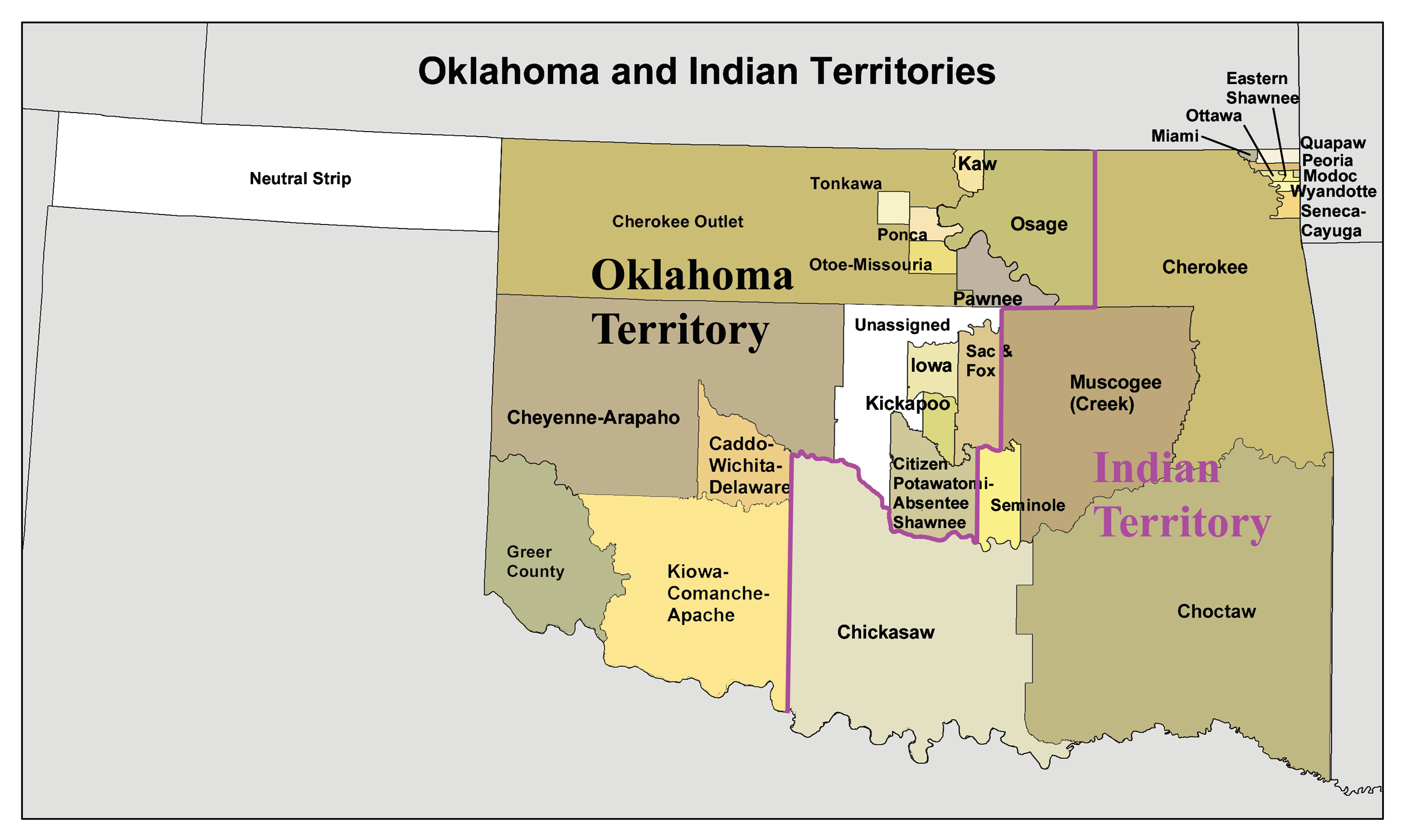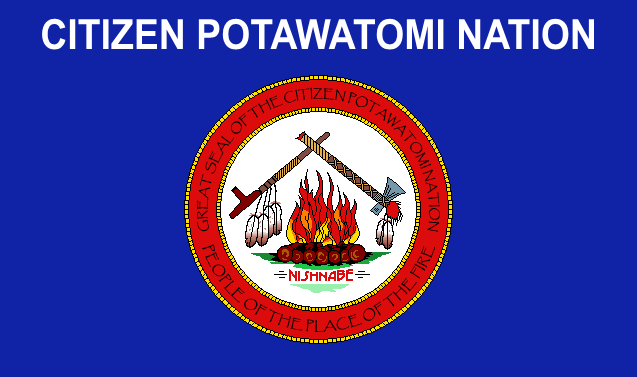Citizen Potawatomi Nation Language Preservation
Citizen Potawatomi Nation
Haley Allgeyer
Introduction
Native American tribes across the country are struggling to maintain and revitalize their Native languages. Potawatomi is a Native language of the Citizen Potawatomi Nation located centrally in Oklahoma. This federally recognized tribe has made many active strides to help preserve their language as well as teach others and spread their impact. They have implemented online courses to learn the language as well as an online dictionary to help follow along while learning. They have also made many videos assisting people trying to learn this language, including children’s videos so that young Potawatomi children can easily carry on their language in the future. They even have an online course for children, and encourage people of their nation and other native communities to attempt to teach their children using this.

History
The Potawatomi People are originally from lower Michigan, with around 8,000 original people. It was not until the 1640’s that some of the bands moved to Wisconsin. They stayed near Lake Michigan until European settlers, specifically the French, began moving in and threatening their territories. The French records indicate around 4,000 observed people in the Potawatomi Nation. This caused their people to have to move around frequently, but still stayed in the Michigan and Wisconsin areas. By the early 1700’s most of the Potawatomi People lived between Detroit and Milwaukee. The settlers’ attempts to takeover the territories at the time were successful, and the Potawatomi land was reduced significantly by the 1800’s. At this point their population shrunk to 3,440 people on the reservation, with 600 left “strolling” (Sultzman, L., 1998). Once land cessions were implemented, Potawatomi groups were forced to merge and move to reservations. During this time, around the mid 1800’s, the Citizen Potawatomi Nation moved to Oklahoma, where they remain today. Some Potawatomi groups still thrive in Michigan, Wisconsin, and even Indiana but the biggest federally recognized group, the Citizen Potawatomi Nation, is located in Shawnee, Oklahoma. It has even been noted that some groups moved to northern Mexico around the 1850’s along with a Native American and Indigenous Mexican tribe known as the Kickapoo. The current listed population of all Potawatomi bands together is almost 28,000. This is a huge difference in the estimated total in 1910, which was around 2,620. Despite the dramatic decline in population from the early 1600’s, the Potawatomi People remain strong.
The Potawatomi Language
The Potawatomi Language is categorized as Central Algonquin, and is similar to Ojibwe. It is a more simple language, having only four vowel sounds, as the English language has five (Sultzman, L., 1998). Despite this, many current speakers still have difficulty reading historical texts their nation has preserved. This is because in historical times the language did not have a definitive, established alphabet that all Potawatomi bands used, so there are many differentiations between historical texts. Because of this, it has proven even more difficult to keep the language alive today. The Potawatomi people refer to themselves as Nishnabek, which means, “people.” The actual Potawatomi name is translated from “potawatomink,” which is the Ojibwe word for “people of the place of fire” (Sultzman, L., 1998). They are also referred to as “Fire Nation, Keepers of the Sacred Fire, and People of the Fireplace. ” These names paint the role of the Potawatomi people as the “keeper of the council fire in an earlier alliance with the Ojibwe and Ottawa” (Sultzman, L., 1998). This shows the relationship between these nations and how they interact using alliances even today.

Only 5 Recognized Heritage Speakers Left
The language is currently spoken by less than 100 people in North America, with only five recognized heritage speakers within the Citizen Potawatomi Nation. Despite the huge population alive today, the language is rarely spoken. Many Potawatomi People just speak English, because it was what they were taught growing up. It is said that the easiest time to learn a language is when you are young, which is why teaching children the language when they are young is so important, as they can continue to teach their children, and so on. That is the current goal of the Citizen Potawatomi Nation.
Revitilization
The Citizen Potawatomi Nation is actively making efforts to keep their language alive. Most of their efforts are through their website, https://www.potawatomi.org/. Their mission statement is as follows, “The Potawatomi language department wants for people to use and speak this language. We want more people as we head into the future to not be afraid to speak Potawatomi.” Their website includes a downloadable online dictionary, an online self-paced course, a children’s course, as well as many videos of cultural teachings. All of these are available on their website and are free. As well as providing a mission statement, they have also set a list of their intentions and how these will help their cultural future. They are as follows:
- We develop different tools which we hope students will like and use.
- We hold classes which are fun and work with a variety of ages of students.
- People can learn the language if they live far away or have monetary limitations.
- We speak the Potawatomi language in our community.
- We encourage members to learn and use their language.
- We record and document all speakers in order to have this knowledge available for future generations.
- We want a good community spirit in order so that people who want to learn can learn
This list emphasizes exactly how the Citizen Potawatomi Nation plans to implement their revitalization efforts. It is important to establish these things and ensure that the community understands the approach. There are currently thirty cultural videos posted, including children’s videos and even cooking follow along videos. A big part of learning a language is learning the culture as well. These videos are very important so that people who are trying to learn the language can immerse themselves in the culture and understand what they are talking about rather than just the translations. Because the Potawatomi language is a language of Indigenous Peoples, the baseline of the language was very influenced by European languages. This means that a good amount of the Potawatomi phrases are better used in the Potawatomi culture rather than a “western” context. For example, there are phrases such as, “the coyotes are taking the chickens.” This phrase would be used less often in a modern context, but it is important to understand what this means in the Potawatomi cultural context.
Learn Potawatomi!
While learning about Native language revitilization, many think to themselves, how can I help? There are a multitude of ways to help, but a quick and easy way is to learn a few Potawatomi words. This is a small attempt that will make a huge difference. This list of a few common words and phrases can help any person attempting to learn Potawatomi start off, and make it easier to communicate when utilizing the language.
- Hello - bozho
- How are you - nijena
- Thank you - iwgwien / mIgwe’c
- What is your name? - nije ezhnekazyen
These, as well as an entire online dictionary of words and phrases, are all available on Kansas Heritage Online Dictionary, (Kansas Heritage Group, 1997). Taking a look a few common words and phrases can can make the world of a difference in continuing the efforts to keep the language and culture alive. Check out this online dictionary, as well as the Citizen Potawatomi Nation website to learn more. Any effort put into helping keep the Potawatomi language and culture alive helps.
Citations
Campbell L. and Mithun M. “Native American languages, Indigenous languages of the Native Peoples of north, middle, and south America.” Retrieved February 10, 2019 from http://www.linguistics.ucsb.edu/faculty/mithun/pdfs/1998%20Nat%20Am%20Lgs%20Encarta.pdf
Kansas Heritage Group. (1997, July 2). Potawatomi Dictionary. Retrieved April 11, 2019, from http://www.kansasheritage.org/PBP/books/dicto/d_frame.html
Language • Citizen Potawatomi Nation. (n.d.). Retrieved February 10, 2019, from https://www.potawatomi.org/
Lesson Nine GmbH. (2017, October 4). What Was, And What Is: Native American Languages In The US. Retrieved February 10, 2019, from https://www.babbel.com/en/magazine/native-american-languages-in-the-us/
Neaseno Perrot. (n.d.). Retrieved April 11, 2019, from http://www.neaseno.org/
Potawatomi Dictionary. (2017, December 26). Retrieved February 10, 2019, from http://www.potawatomiheritage.com/potawatomi-dictionary/
Sultzman, L. (1998, December 18). Potawatomi History. Retrieved April 11, 2019, from http://www.tolatsga.org/pota.html
Thunder, J. (n.d.). Forest County Potawatomi - Potawatomi Language. Retrieved April 11, 2019, from https://language.fcpotawatomi.com/
Vaughan-lee, E. (2014, August 19). 'Who Speaks Wukchumni?' Retrieved February 10, 2019, from https://www.nytimes.com/2014/08/19/opinion/who-speaks-wukchumni.html
Image References
Oklahoma and Indian Territories [Map]. (2010, January 20). In https://commons.wikimedia.org/wiki/File:Okterritory.png Retrieved April 11, 2019.
Xasartha. (Creator). (2014). Flag of Potawatomi Nation. [Image]. Retrieved February 11, 2019, from https://commons.wikimedia.org/wiki/File:Flag_of_the_Citizen_Potawatomi_Nation.PNG